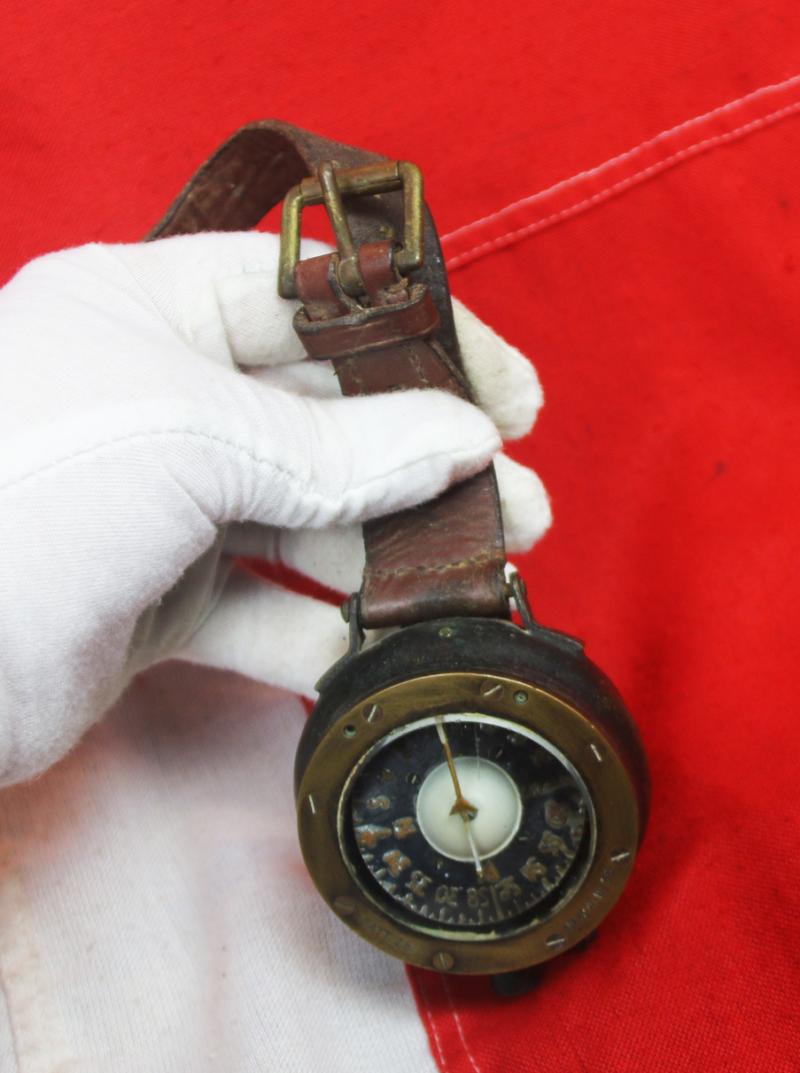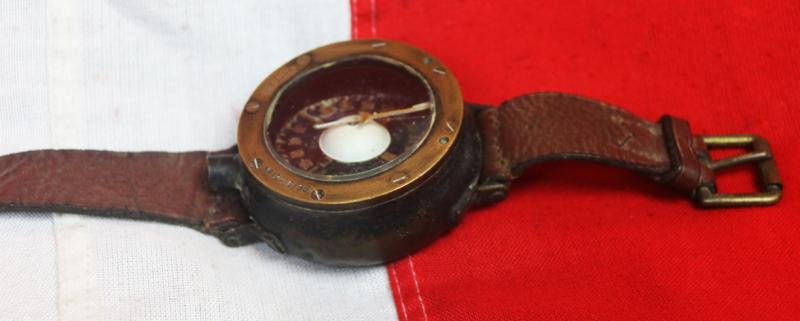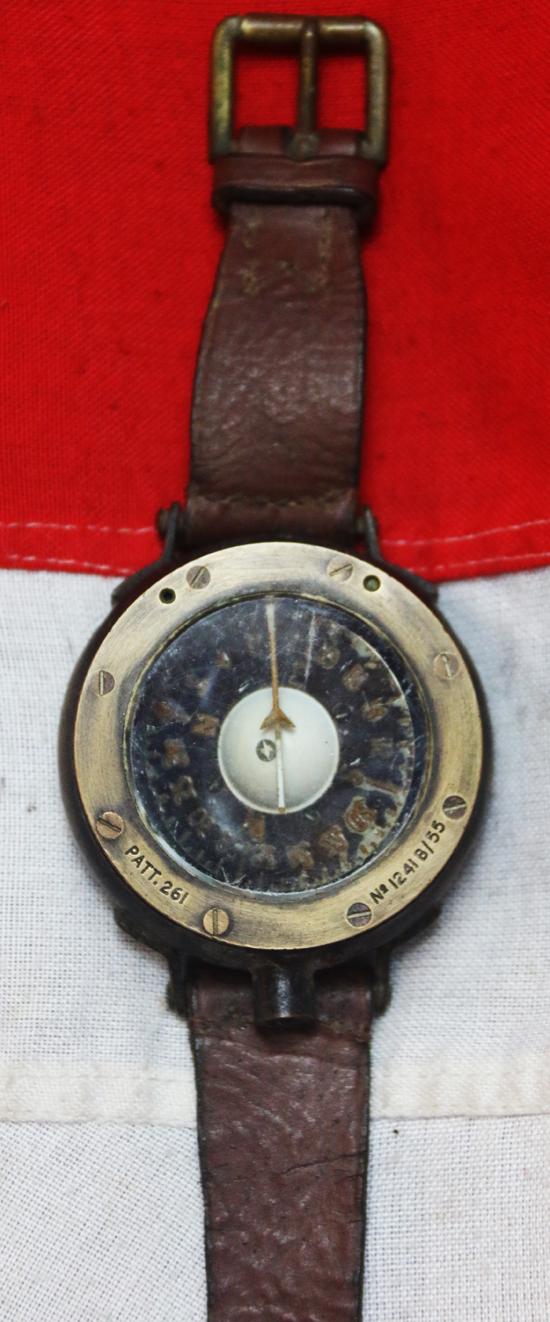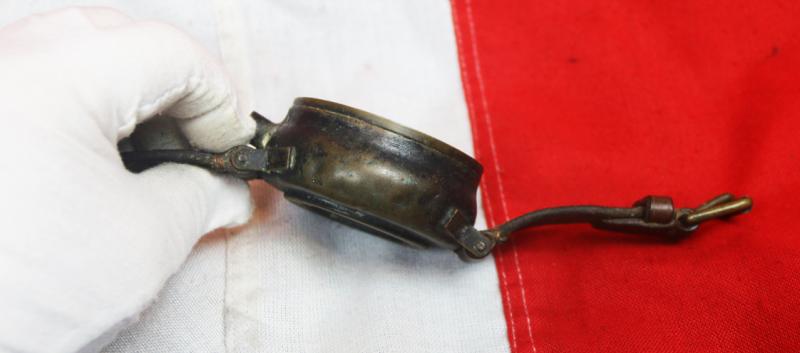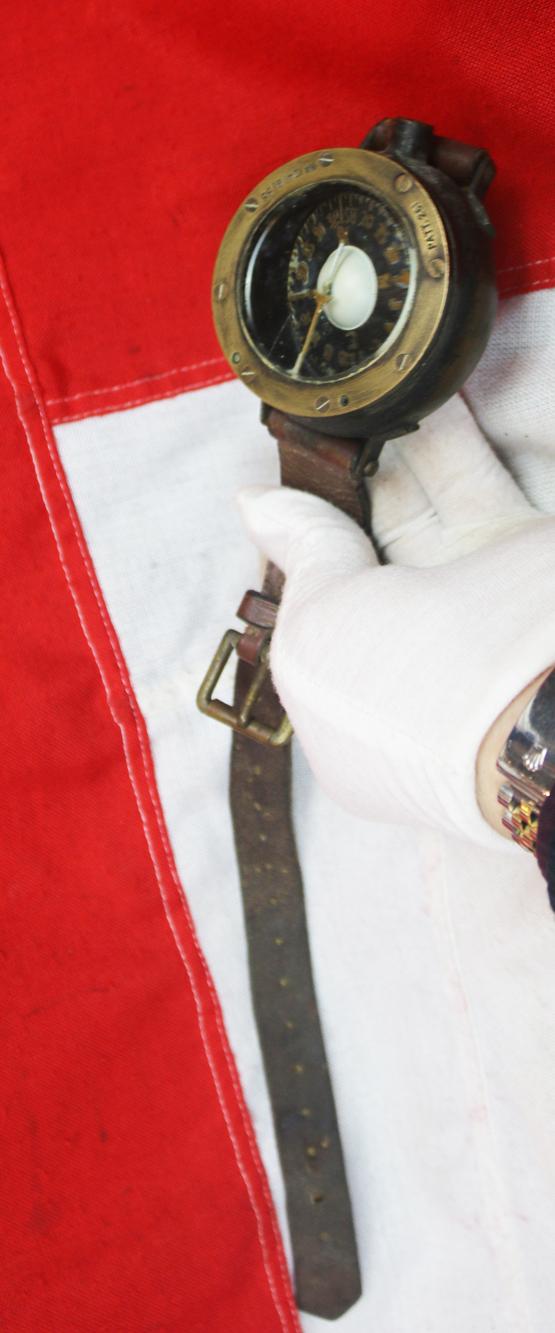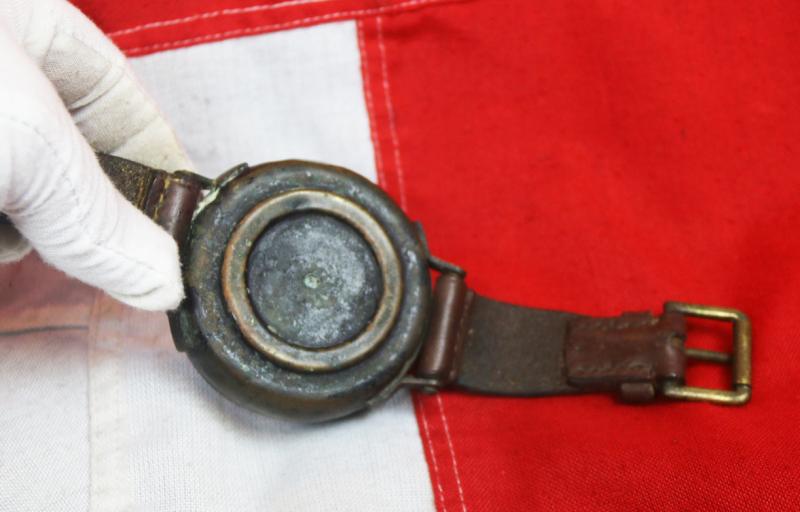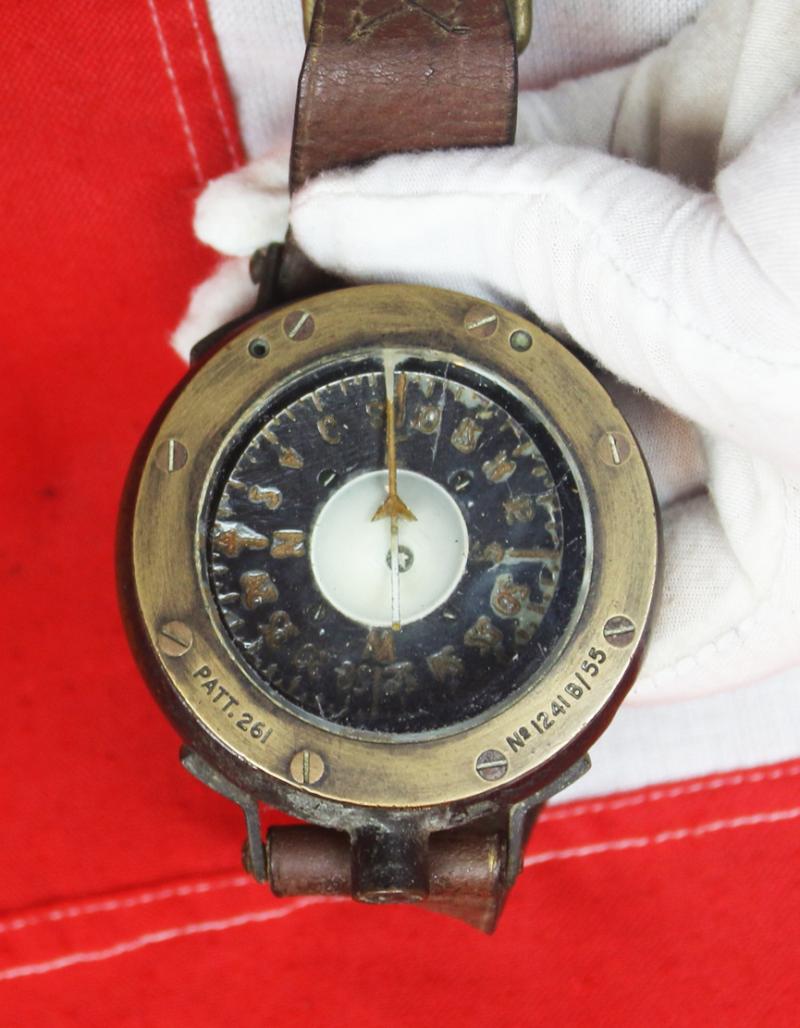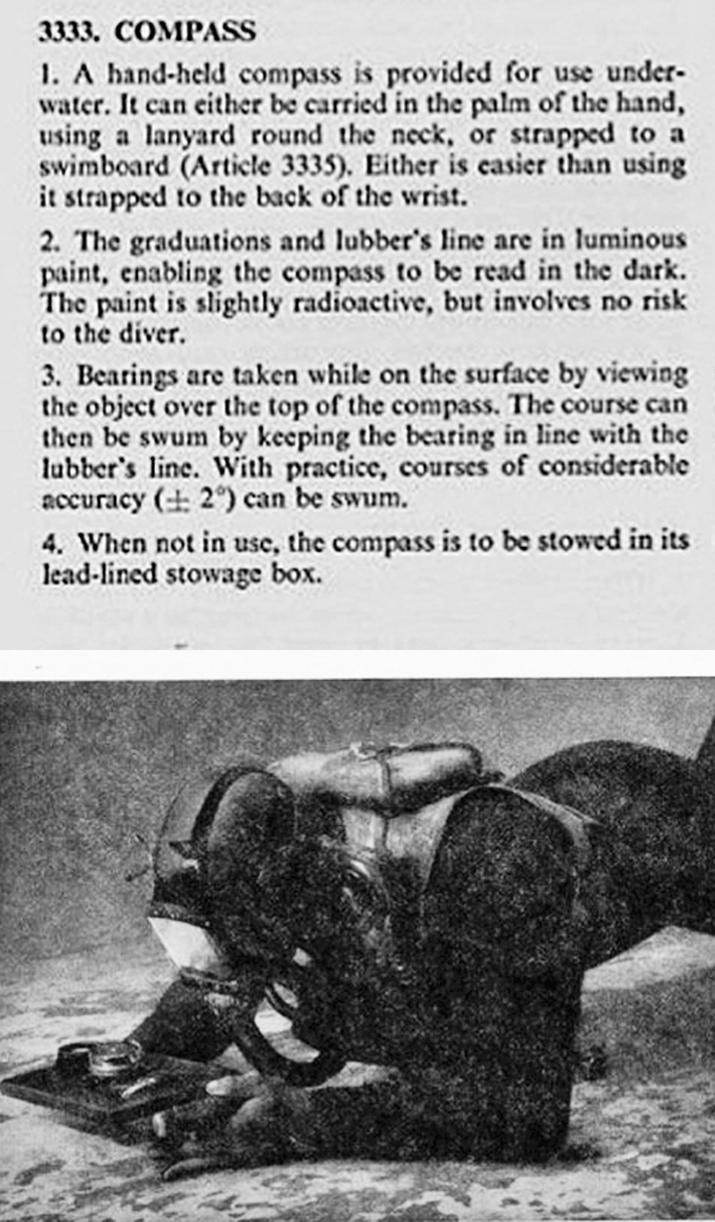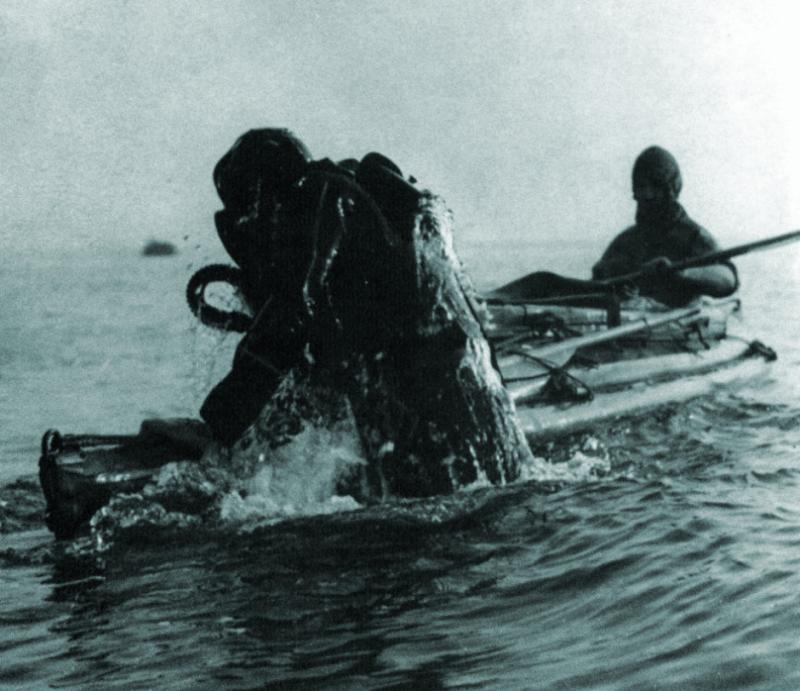An Early 'Special Boat Service' Royal Navy Special Forces Frogman's Bracelet Compass With Original Strap. Excellent Condition Leather, Fully Working Compass. Can Be Operational With a Lanyard Mount
Brass pressure sealed case, with with screw fitted filling or release aperture, original long leather strap in excellent condition with original buckle. In good working order.
The pattern 261. No. 1241B. Divers Compass. Stamped upon the face seal ring.
The Special Boat Service (SBS) is the special forces unit of the United Kingdom's Royal Navy. The SBS can trace its origins back to the Second World War when the Army Special Boat Section was formed in 1940. After the Second World War, the Royal Navy formed special forces with several name changes—Special Boat Company was adopted in 1951 and re-designated as the Special Boat Squadron in 1974—until on 28 July 1987 when the unit was renamed as the Special Boat Service after assuming responsibility for maritime counter-terrorism. Most of the operations conducted by the SBS are highly classified, and are rarely commented on by the British government or the Ministry of Defence, owing to their sensitive nature.
The Special Boat Service is the maritime special forces unit of the United Kingdom Special Forces and is described as the sister unit of the British Army 22 Special Air Service Regiment (22 SAS), with both under the operational control of the Director Special Forces. In October 2001, full command of the SBS was transferred from the Commandant General Royal Marines to the Commander-in-Chief Fleet.6 On 18 November 2003, the SBS were given their own cap badge with the motto "By Strength and Guile". SBS operators are mostly recruited from the Royal Marines Commandos.
Origin: Second World War
Roger Courtney became a commando in mid-1940 and was sent to the Combined Training Centre at Achnacarry in Scotland. He was unsuccessful in his initial attempts to convince Admiral of the Fleet Sir Roger Keyes and later Admiral Theodore Hallett, commander of the Combined Training Centre, that his idea of a folding kayak brigade would be effective. He decided to infiltrate HMS Glengyle, an infantry landing ship anchored in the River Clyde. Courtney paddled to the ship, climbed aboard undetected, wrote his initials on the door to the captain's cabin, and stole a deck gun cover. He presented the soaking cover to a group of high-ranking Royal Navy officers meeting at a nearby Inveraray hotel. He was promoted to captain and given command of twelve men as the first Special Boat Service/Special Boat Section.
The unit, on the shores of Sannox, Isle of Arran, was initially named the Folboat Troop, after the type of folding canoe employed in raiding operations and then renamed No. 1 Special Boat Section in early 1941. One training exercise required SBS members to navigate folboats 140 miles (230 km) over 3 days and 3 nights from Ardrossan to Clachan, via the Isle of Kerrera, where they reconnoitred and sketched RAF Oban. Attached to Layforce, it moved to the Middle East. The unit worked with the 1st Submarine Flotilla based at Alexandria and did beach reconnaissance of Rhodes, evacuated troops left behind on Crete, and carried out a number of small-scale raids and other operations. In December 1941 Courtney returned to the United Kingdom where he formed No2 SBS, and No1 SBS became attached to the Special Air Service (SAS) as the Folboat Section. In June 1942 they took part in the Crete airfield raids. In September 1942 eight men of the SBS carried out Operation Anglo, a raid on two airfields on the island of Rhodes; all but two of the men were captured after carrying out their mission. Destroying three aircraft, a fuel dump and numerous buildings, the two uncaptured SBS men had to hide in the countryside for four days before they could reach the waiting submarine. After the Rhodes raid, the SBS was absorbed into the SAS due to the heavy casualties they had suffered.
The Royal Marines Boom Patrol Detachment (RMBPD) was formed on 6 July 1942, and based at Southsea, Portsmouth. The RMBPD was under the command of Royal Marines Major Herbert 'Blondie' Hasler with Captain J. D. Stewart as second in command.The detachment consisted of 34 men and was based at Lumps Fort, and often exercised in the Portsmouth Harbour and patrolled the harbour boom at nights.
1st SAS was divided, with 250 men from the SAS joining the Small Scale Raiding Force to form the Special Boat Squadron under the command of Major the Earl Jellicoe. They moved to Haifa and trained with the Greek Sacred Regiment for operations in the Aegean.
They later operated among the Dodecanese and Cyclades groups of islands in the Dodecanese Campaign and took part in the Battle of Leros and the Battle of Kos. They, with the Greek Sacred Band, took part in the successful Raid on Symi in July 1944 in which the entire German garrison was either killed or captured. In August 1944 they joined with the Long Range Desert Group in operations in the Adriatic, on the Peloponnese, in Albania, and, finally, in Istria. So effective were they that, by 1944, the 200–300 men of the SBS were holding down six German divisions.
Throughout the war, No.2 SBS did not use the Special Boat Squadron name but instead retained the name Special Boat Section. They accompanied US Major General Mark Clark ashore before the Operation Torch landings in October 1942 on Operation Flagpole. Later, one group, Z SBS, which was based in Algiers from March 1943, carried out the beach reconnaissance for the Salerno landings and a raid on Crete, before moving to Ceylon to work with the Special Operations Executives, Force 136 and later with Special Operations Australia. The rest of No. 2 SBS became part of South-East Asia Command's Small Operations Group, operating on the Chindwin and Irrawaddy rivers, and in the Arakan, during the Burma campaign.23
Although their roles always overlapped to some extent, the various canoe and boat units became more specialised from late 1942 onwards. The RMBPD focused on ship attack and harbour sabotage, the Special Boat Section and COPP undertook covert beach surveys, and the Special Boat Squadron engaged in raiding, sabotage and reconnaissance above the high-water mark.
Picture in the gallery of the printed details on the RN service guide for its use, and storage of compass when not in use.
A few years ago we were privileged to have acquired the service sword of a WW2 SBS D.Day hero, and his ancestral; sword of his ancestor, the great ‘Nicolson of Delhi’ hero of the Raj in the 19th century, one of the few men to still have his much revered statue still standing in India.
Code: 25234


